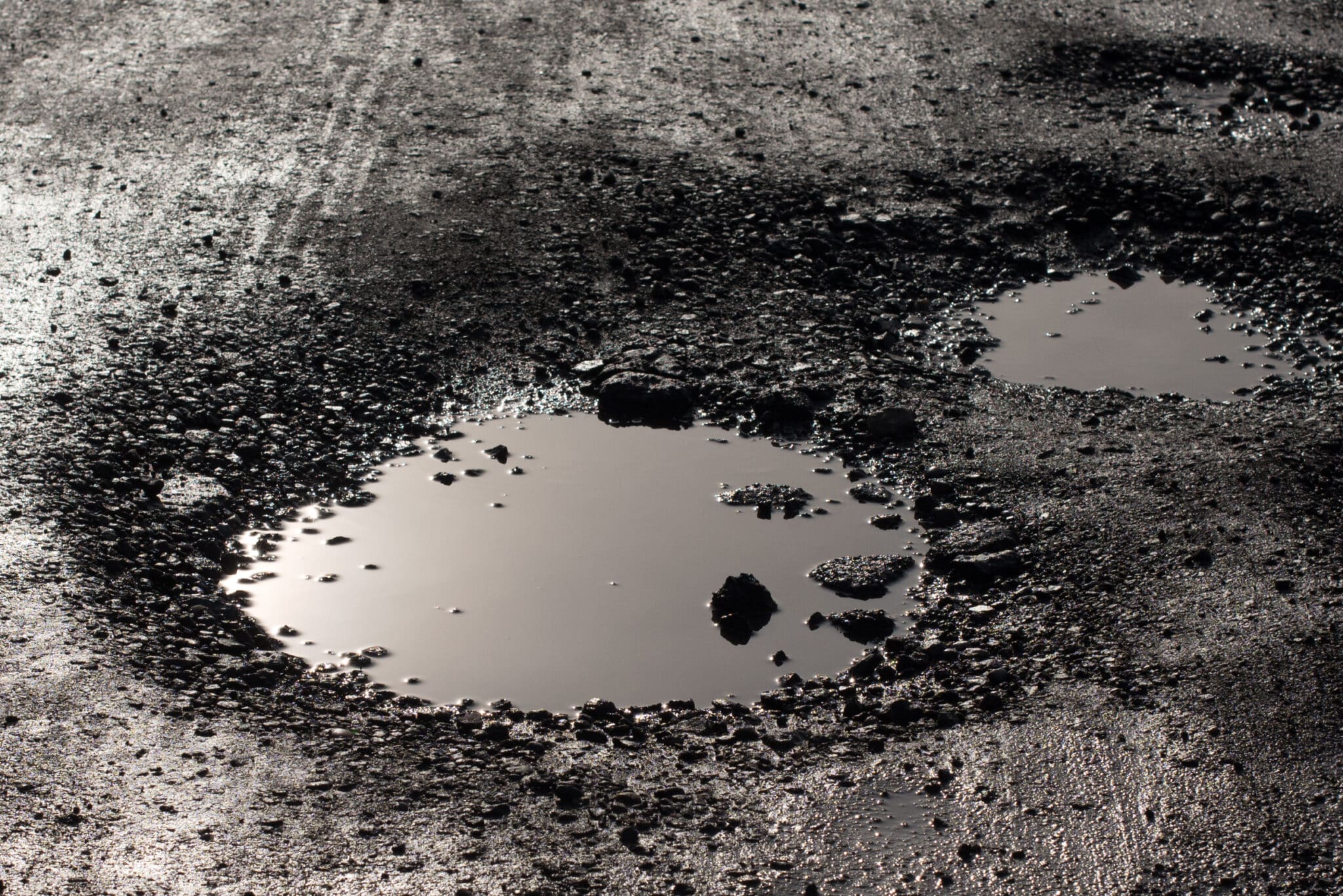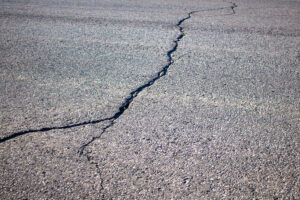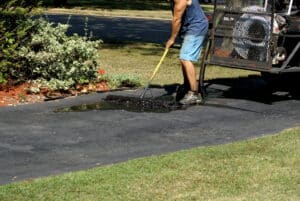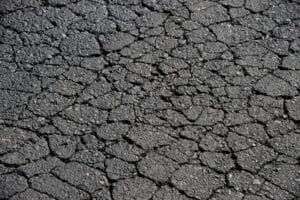Imagine driving down the highway, only to hit a pothole suddenly. The jarring impact can destroy your tires and cause damage to other parts of your car. It is not just drivers who are affected by these annoying holes. Potholes are also an issue for cyclists and pedestrians. So, what is it about these small pavement craters that make them so problematic? And how do we fix a pothole when one appears? Read on for all you need to know about pothole repair.
What are potholes?
A pothole is a hole in the parking lot or road surface that forms when water seeps into cracks and rests beneath it. As this water freezes and thaws, it expands the crack until there is nothing left to support the weight of cars driving overhead. This can cause potholes on roads both large and small – including asphalt parking lots!
Read More: How Do Potholes Form?
Why are potholes dangerous?
Aside from the apparent danger that potholes pose to drivers, pothole repair is also essential for cyclists and pedestrians. For example, a cyclist who hits a pothole at high speeds can easily be thrown over their handlebars or onto the pavement — resulting in severe injuries.
Pedestrians are similarly affected by potholes in asphalt parking lots, as potholes can throw them off balance and cause injuries.
How to Detect Potholes So They Can Be Fixed Quickly
The best way to keep your pavement in decent shape is to deal with potholes as soon as they form. Potholes are due to temperature changes like excessive heat or the freeze and thaw of water in pavement cracks. Watch out for potholes forming, especially after major storms, but they also develop slowly over time.
Sometimes potholes can be easy to see, but other times they are covered with loose gravel or dirt. So, you will need to check your property regularly for potholes that could cause damage if left untreated.
Here is how to spot an early pothole so you can patch it before it’s more than a slight dip in the pavement:
Watch Puddles and Low Places
Puddles are your greatest tool when it comes to spotting future pavement repair needs. Puddles show you the low places that form a pool of water instead of flowing smoothly into the storm drains. Circular puddles are more likely to be potholes, while large and angular spaces are more likely to be forming alligator cracks.
Look for ‘Circle’ Patterns in the Pavement
When it’s dry, scan your eye over the pavement and driving routes on your property. Look for any circles in the pavement that appear a little lighter or darker than the rest of the asphalt. Potholes form in circles and oval-like divots in the pavement that become deeper and sharper over time.
Pothole Clusters
Drivers, cyclists, and pedestrians can also contribute to pothole clusters. If you notice a group of puddles or divots in the pavement near each other, chances are they are potholes.
Pothole Repair: Tips for Fixing Potholes
How can you deal with potholes on your property? Whether you hire a professional crew or perform DIY asphalt repair, there is a tried-and-true method to resolve pothole damage.
Cold Weather Cold Patching
If the outside temperature is colder than 50 F, asphalt will not set right. Therefore, potholes that appear during winter months (caused by freezing and thawing water) need a temporary “cold patch” that will last just long enough to make it to the Spring thaw when you can schedule a permanent asphalt repair.
Clean Out the Pothole Carefully
When the pothole is ready to be patched or repaired, start by cleaning out the hole. First, use a shovel and gloves to clear away the dirt, debris, and gravel built up in the hole. Next, clean it out to the bottom and knock debris off the edges to leave a clean edge, as well.
Cut Away the Rough Edge
Most pothole edges are jagged, broken pavement. Use a diamond-edged saw to cut back those points and smooth out the edge of your pothole. This not only prepares for the patching, but it can also make your pothole less dangerous while you are waiting to pour asphalt.
Fill and Tamp Deep Holes
If the pothole is deep, you may need to fill it with substrates like fine gravel or paver filler to create a sturdy under-layer onto which a new layer of asphalt will be poured. You may choose to peel back some of the top layers of asphalt at this time, as well. Then, use a tamper to press down the new substrate every two inches to keep it firm and stable.
Fill and Seal Spider Cracks
If cracks are coming from the hole, fill them. Use moldable filler putty and a blow torch to melt the new binding agent in the cracks near the pothole you are about to fill. When it hardens, use some paver filler to seal the cracks.
Top, Level, and Tamp the Patch
Fill the pothole with fresh patching asphalt and top it off. Tamp it down with a tamping device, a vehicle roller, or a flat, heavy tool. Top, level off and tamp the patched asphalt until it is flush with your current pavement.
Cure and Reseal the Asphalt
After pothole asphalt repair, you should do a few things to protect your pavement from cracking or pitting again. First, choose the right sealer for your pothole asphalt repair, and apply it within 24 hours.
The sealant will dry in about 30 minutes to an hour, depending on weather conditions. When the pothole asphalt repair is dry, you can pave over it with your existing pavement to ensure that potholes do not pockmark your asphalt again.
Seal coating prevents future moisture from seeping into your pavement and causing the problem again. It is critical to reseal your parking lot and pathways every five years or when pothole patches have been made.
Professional Pothole Repair
If you have potholes in your asphalt parking lot or asphalt path, it is a good idea to get them repaired as soon as possible. The longer potholes go untreated, the more likely they will grow and cause additional damage that will be difficult to mend.
Hire a professional crew for pothole repair services if you do not have the equipment or knowledge to do it. Contact Superior Asphalt, LC today for fast, professional Utah pothole and parking lot repair.
Read More:




